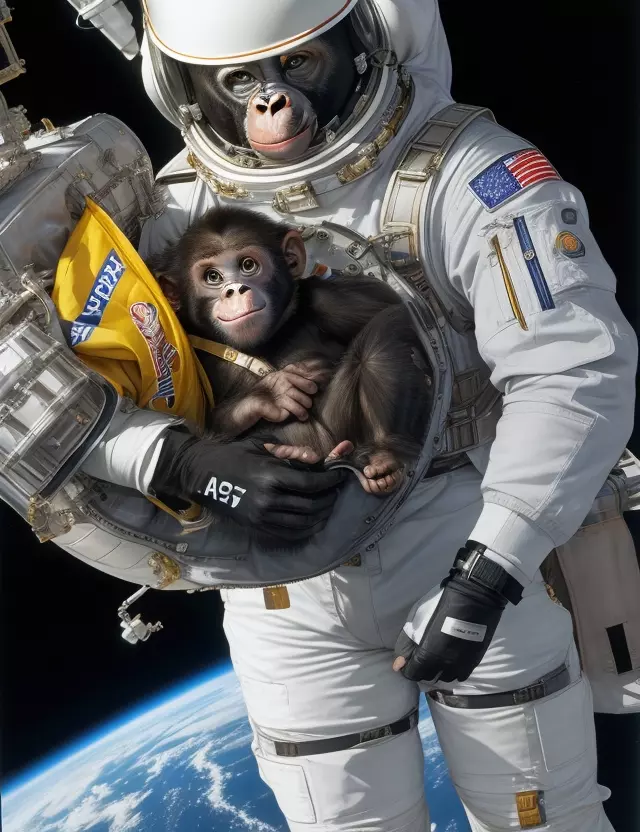Project Mercury Milestone: Chimpanzee Enos Launches into Space (1961)
Contributions to Human Spaceflight Preparations

Introduction
On November 29, 1961, Project Mercury reached a notable milestone in space exploration as the chimpanzee Enos embarked on a historic journey into space. Launched aboard the Mercury-Atlas 5 spacecraft, Enos played a crucial role in advancing human spaceflight preparations. Explore the scientific achievements and contributions of this mission to the broader context of space exploration during the early days of the Mercury program.
Project Mercury Overview
Project Mercury, the first human spaceflight program by the United States, aimed to put astronauts into space and safely return them to Earth. As part of the program's early efforts to understand the effects of space travel on living organisms, including humans, non-human primates were included in some missions.
The Role of Chimpanzee Enos
Enos, a chimpanzee trained for spaceflight, played a crucial role in providing valuable data on the physiological and psychological effects of space travel. His mission involved tasks such as responding to levers and lights to demonstrate the ability to perform in space conditions. Enos's successful mission contributed essential insights to the understanding of how living organisms could function in the space environment.
Mercury-Atlas 5 Mission
Launched aboard the Mercury-Atlas 5 spacecraft, Enos's mission aimed to orbit the Earth and test the spacecraft's systems for a longer duration. The mission lasted approximately three hours, during which Enos experienced weightlessness and various space conditions. The successful completion of the mission demonstrated the feasibility of extended human spaceflights.
Scientific Achievements
The Mercury-Atlas 5 mission with Enos yielded valuable scientific achievements. Data collected during the mission provided insights into the effects of space travel on Enos's physiology, helping researchers understand the challenges and adaptations required for living organisms in space. The success of Enos's mission paved the way for subsequent human spaceflights in the Mercury program.
Impact on Human Spaceflight
The contributions of Enos's mission were significant in preparing for human spaceflights. The data and knowledge gained from the mission contributed to the understanding of how living organisms, including humans, could adapt to the challenges of space. Enos's journey played a crucial role in building confidence and knowledge for subsequent missions involving human astronauts.
Legacy of Project Mercury
Project Mercury, with missions like Enos's, left a lasting legacy in the history of space exploration. The program laid the foundation for future human spaceflight endeavors, providing essential information on the technical and biological aspects of space travel. Enos's mission, in particular, marked a crucial step in advancing the understanding of living organisms' ability to function in the space environment.
As we reflect on the historic launch of Enos into space on November 29, 1961, we recognize the significance of this mission in the context of Project Mercury. Enos's journey contributed valuable scientific data and insights, playing a pivotal role in preparing for the next phase of human space exploration.



